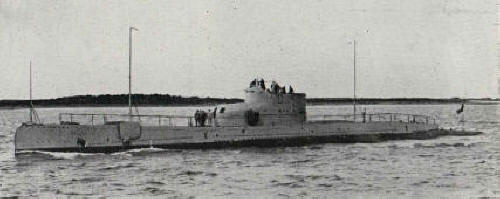
NAVYPEDIA
 Support the project with paypal
Support the project with paypal
Photo

Delfim 1934
Ships
| Name | No | Yard No | Builder | Laid down | Launched | Comp | Fate |
|---|---|---|---|---|---|---|---|
| Delfim | D | Vickers-Armstrong, Barrow, UK | 3.1933 | 1.5.1934 | 1935 | stricken 1950 | |
| Espadarte | E | Vickers-Armstrong, Barrow, UK | 3.1933 | 30.5.1934 | 1935 | stricken 1950 | |
| Golfinho | G | Vickers-Armstrong, Barrow, UK | 3.1933 | 30.5.1934 | 1935 | stricken 1950 |
Technical data
| Displacement standard, t | |
|---|---|
| Displacement normal, t | 800/1092 |
| Length, m | 69.2 |
| Breadth, m | 6.50 |
| Draught, m | 3.86 |
| No of shafts | 2 |
| Machinery | 2 Vickers diesels / 2 electric motors |
| Power, h. p. | 2300 / 1000 |
| Max speed, kts | 16.5 / 9.2 |
| Fuel, t | diesel oil |
| Endurance, nm(kts) | 5000(10) / 110(4) |
| Armament | 1 x 1 - 102/40 Vickers-Armstrong Mk M, 2 x 1 - 12.7/62, 6 - 533 TT (4 bow, 2 stern, 12) |
| Electronic equipment | presumably type 120 sonar |
| Complement | 38 |
| Diving depth operational, m |
Standard scale images

Delfim 1937
Graphics
Project history
In 1930 Portuguese government ordered to CRDA (Monfalcone) four submarines: two large (1045/1305t, 17/8kts, 8 533mm TTs, 2 100mm/47 guns) and two medium (780/1000t, 14/8kts, 6 533mm TTs, 1 100mm/47 gun). Their building was started in 1931 (large submarines were named Delfim and Espadarte), however soon Portuguese government for financial reasons has broken the contract. All 4 boats were subsequently completed for Regia Marina as Glauco and Otaria (large), Argo and Velella (medium).
In exchange in 1931 the order for three medium submarines has been given out to British concern Vickers-Armstrong, building was conducted in Barrow. Portuguese boats were saddle-tank-hulled and were structurally similar to typical British submarines of inter-war period, differing by narrower hull. 102mm/40 gun was on a superstructure transferring to CT and was completely covered by a streamlined shield. All TTs had spare torpedoes.
Modernizations
None.
Naval service
No significant events.
 HOME
HOME FIGHTING SHIPS OF THE WORLD
FIGHTING SHIPS OF THE WORLD PORTUGAL
PORTUGAL SUBMARINES
SUBMARINES DELFIM submarines (1935)
DELFIM submarines (1935)
